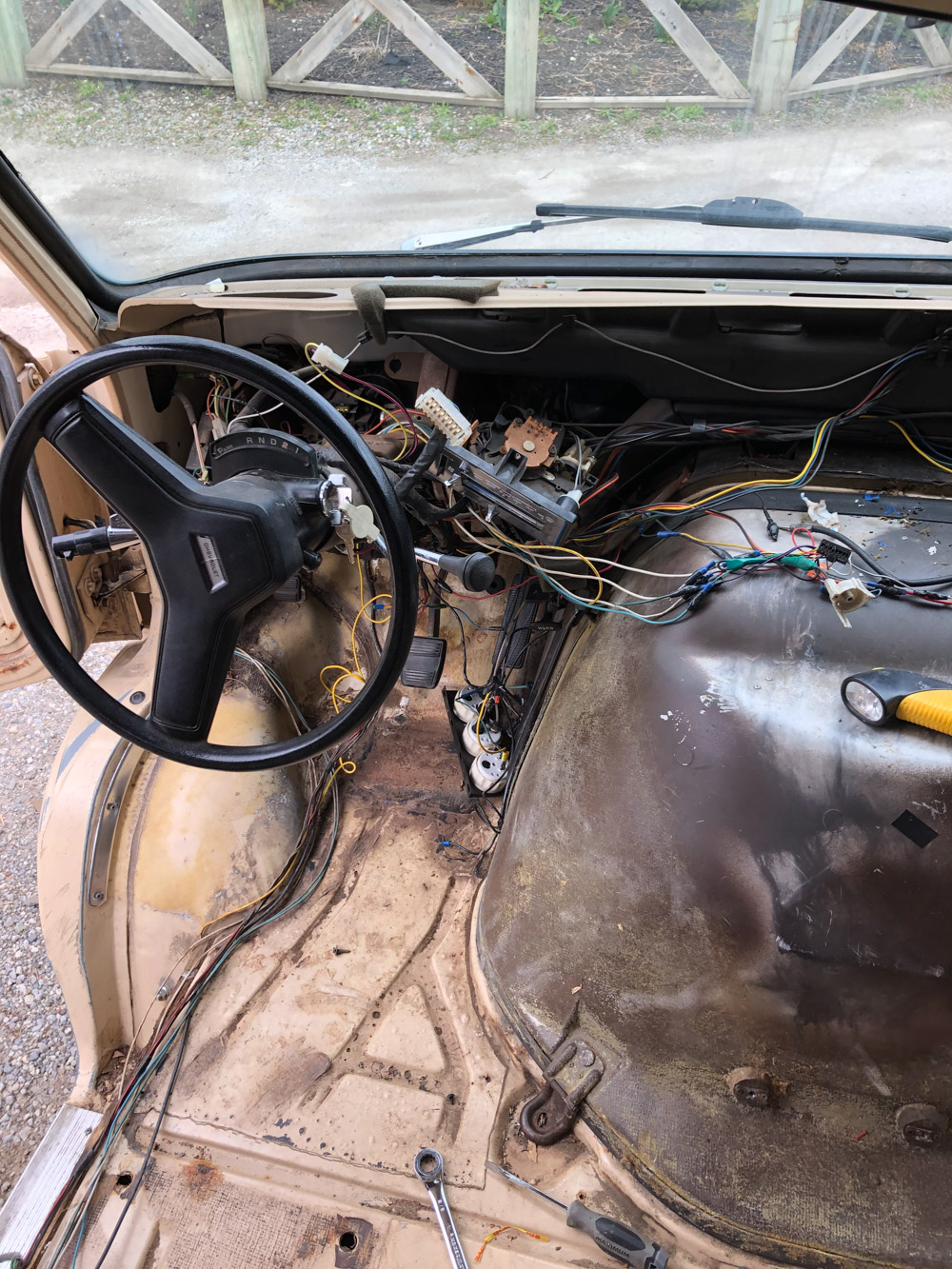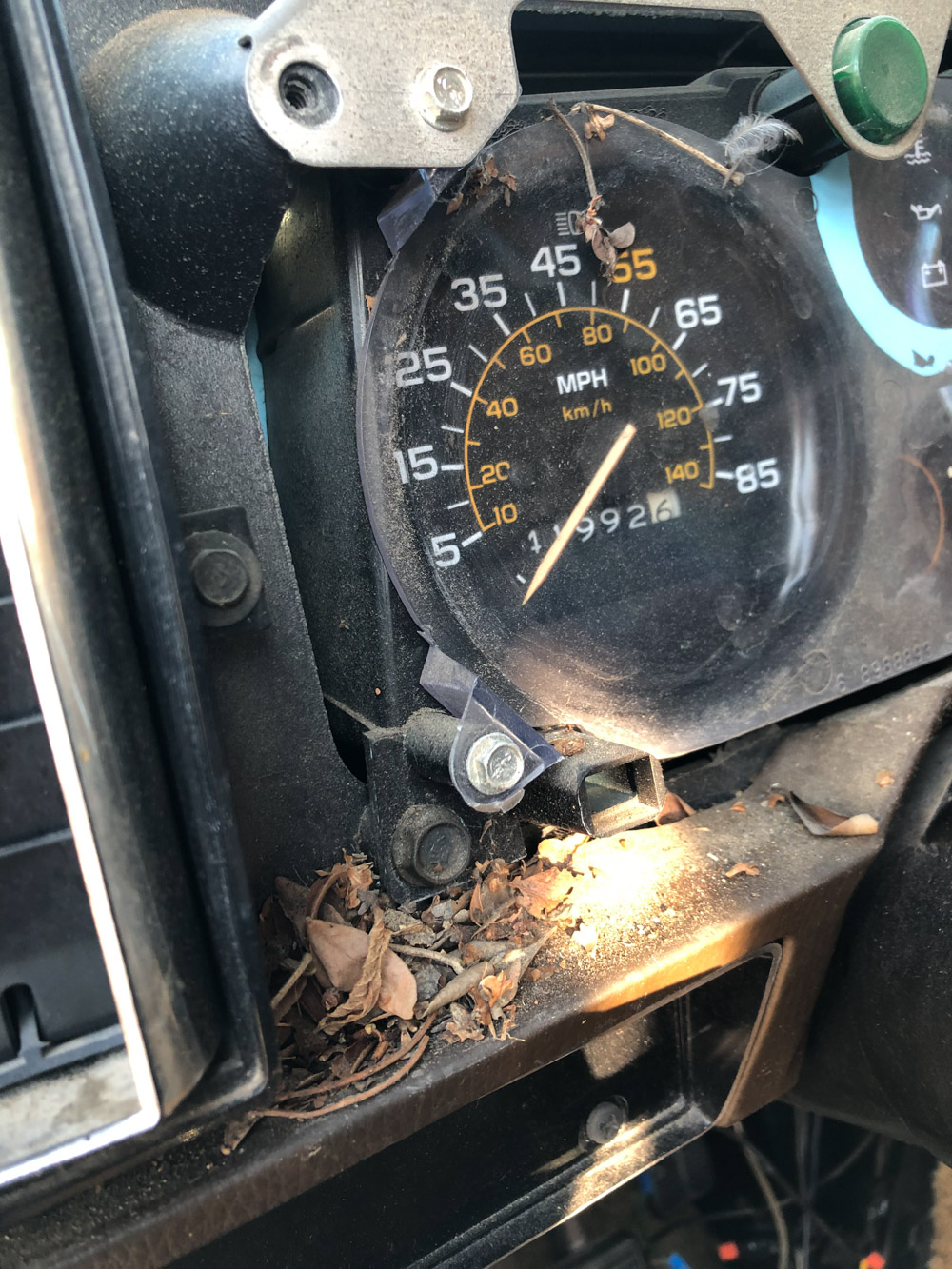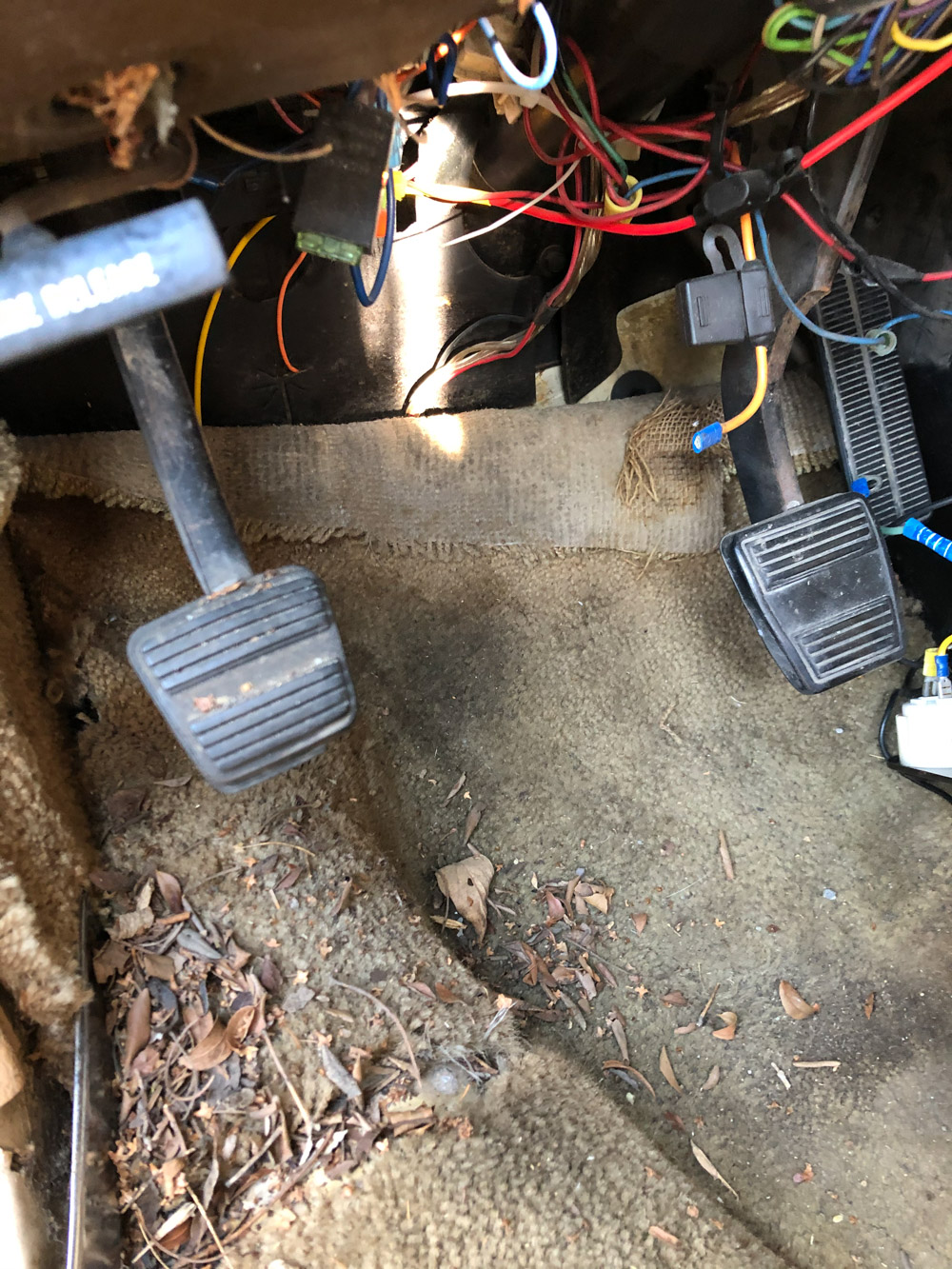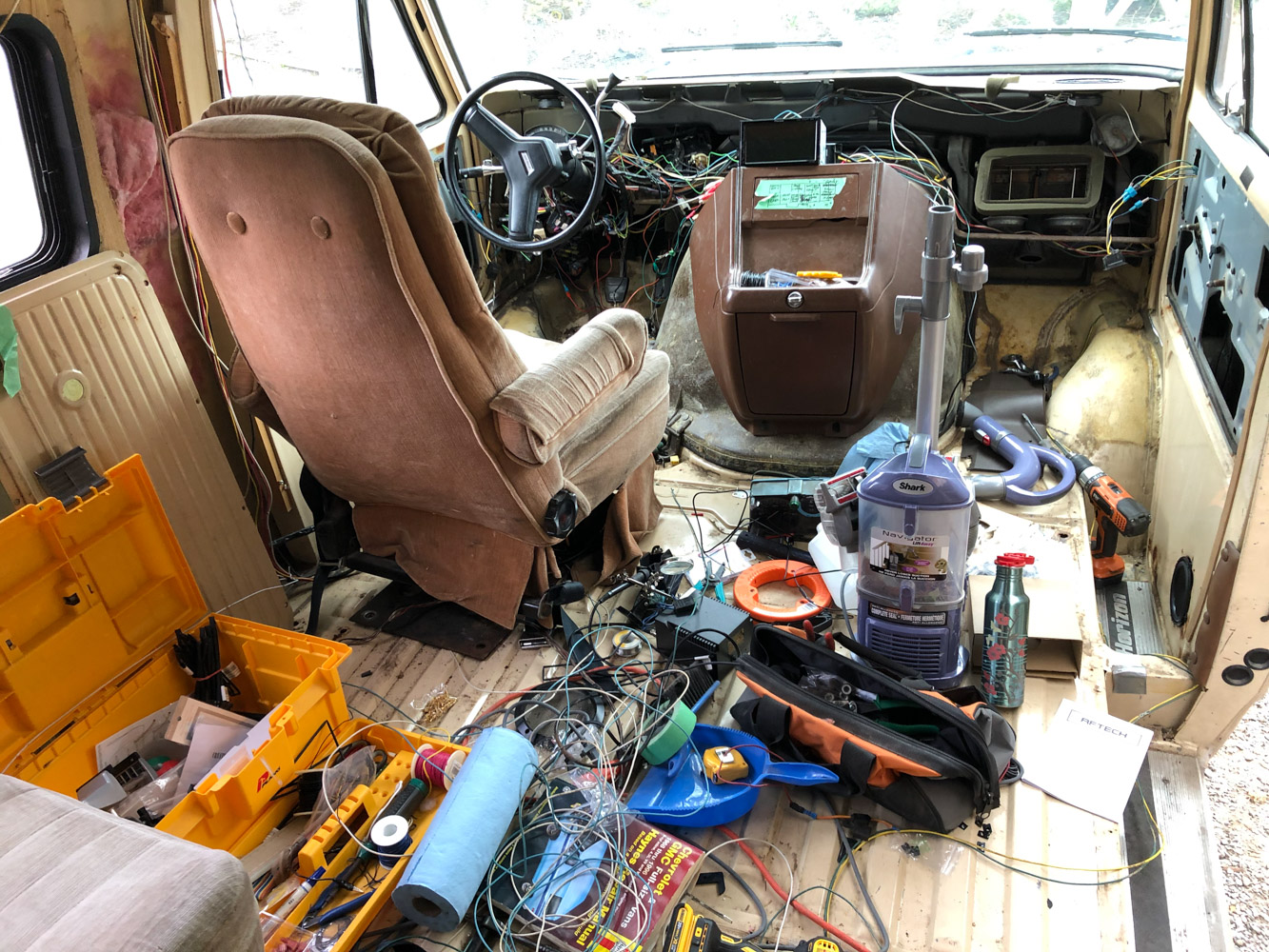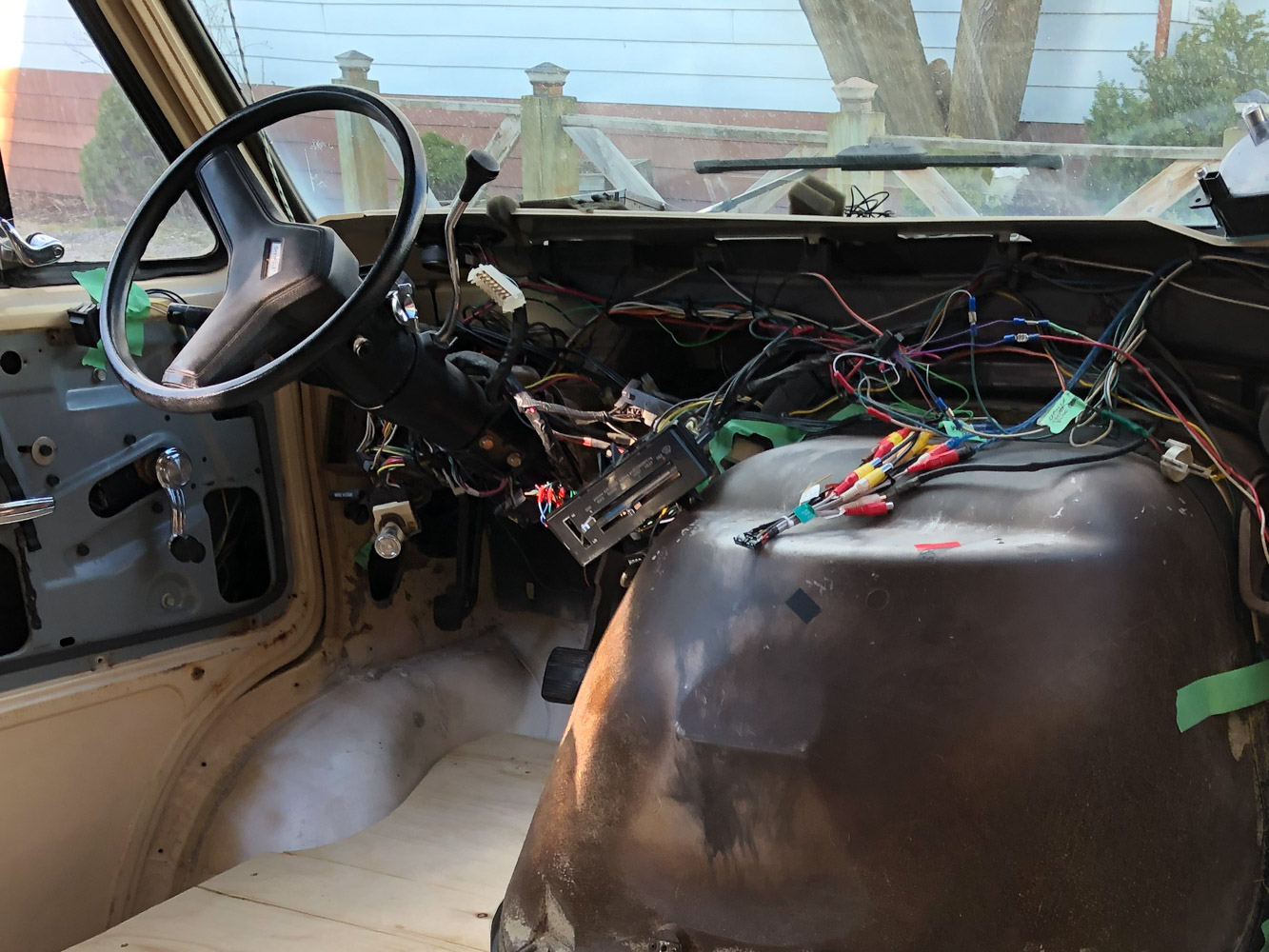
If you want to renovate a 35-year old RV, it’s best to let it sit behind the house for five or six months to make sure you really want to.
Originally we wanted to buy a late model work van, specifically a Dodge Promaster, as is the trend. It would be a blank slate of sheet metal with few windows for one to apply megawatts of solar, a bathroom and his and her’s iMacs and live out the #vanlife fantasy. Just kidding.
“Van Life” fits so easily into the wide genre of aspirational media to arrive online in the last decade. It combines our institutional dissatisfaction with our current situation with the American love of gear, and if this bro with dreads and a chestpiece can do it, so can we.
But our plan is more humble—to build a practical base for camping, canoe trips and possibly a temporary home for us when we move out for some planned renovations. We don’t plan on living in it full time. So when our vintage Chevy showed up on Kijiji we did some math. We figured it would save us a lot of money up front, probably cost a bit more in maintenance in the long run, but for the amount we’d use it, it would be worth it.
the van
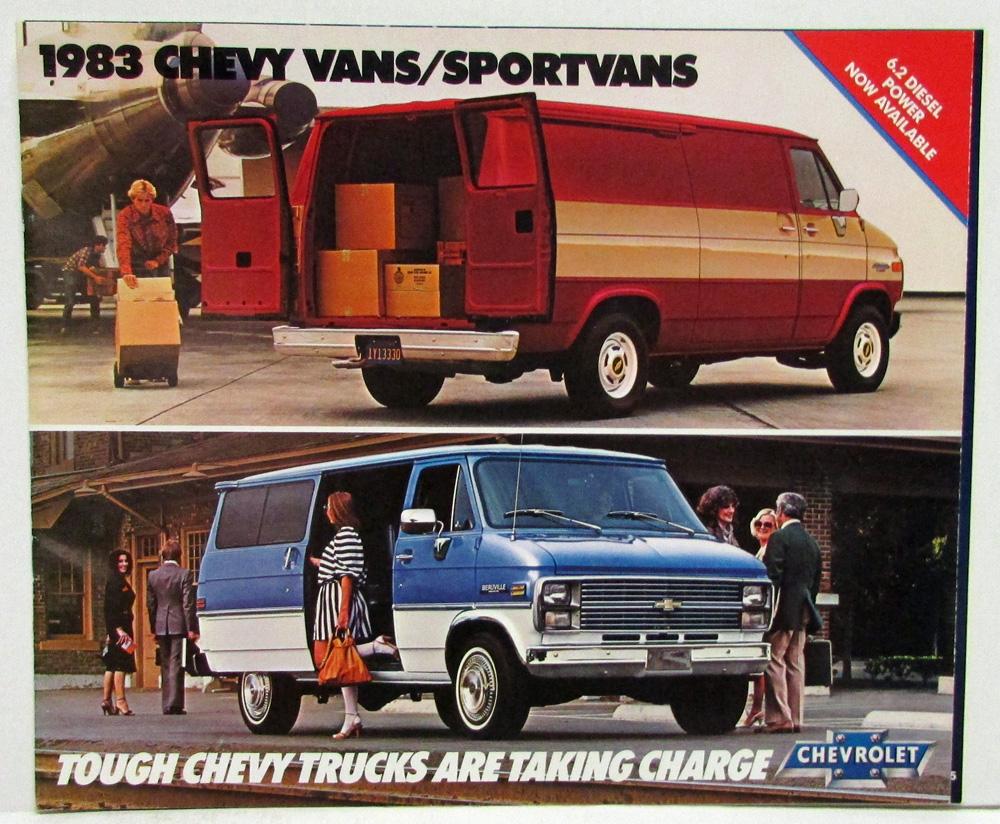
What we bought is a 1984 Chevy G20 ‘Horizon’. It started its life as a standard G20 van with a 305 V8, had its roof cut off and outfitted as an RV by Intervec, earning the Horizon badge. Ours supposedly spent much of its life stored indoors south of the border, so it has low miles and little rust underneath.
When first converted to an RV, it was equipped with the following:
- shower, with propane water heater
- auxiliary propane heater
- air conditioning (factory, in the dash)
- propane stove
- propane fridge
- sink and water pump
- toilet
- 3 water tanks: black, grey and fresh
Over the years systems fail and most people disconnect and remove them. When we got it, the following remained:
- sink and water pump
- toilet
- 3 water tanks
- 100W of solar feeding 2 6V golf cart batteries, installed by the previous owner
We will be removing everything—down to the steel—and eventually reinstalling only the fresh water tank, water pump, solar and batteries. Everything about how they’re installed and connected is going to change. I’ll talk more about these systems in later posts.
demolition
The first step is to remove most of the interior of the van. The furniture inside is cheaply made, musty, heavy and its layout isn’t ideal. There is a loft bed above the front seats on a platform that extends at night, a bench seat lengthwise behind the driver seat that converts to a bed, neither of which are ideal for two people sleeping in the van for extended periods. The rear of the van is occupied by the remains of the shower, some storage and a closet. A clean slate will allow us to insulate the walls, install conduit for wiring and build furnishings and storage exactly to our needs.
We did most of the work in a couple afternoons. The star of the show was the DeWalt DCS367B reciprocating saw, a tool I bought last year that was more of a want than a need, but made quick work of a few cutting jobs that otherwise would have required the tedious removal of stubborn screws.
vehicle wiring
The next big job was to get the dashboard off, install a new stereo receiver, speakers and make sense of some of the wiring. There were decades of disconnected and disused circuits to clean up.
The radio I went with is the Pioneer DMH-C2550NEX. We have a Carplay-capable unit in our other vehicle and I’m spoiled for it, but the G20 predates the DIN standard so fitting a double DIN deck inside the dash would be tricky, requiring a lot of cutting and likely fabricating some kind of bracket. This Pioneer unit has a separate screen connected by cable to a single DIN box housing its circuitry. This allows you to mount the screen on a non-standard dash and hide the guts somewhere inside.
I made a cardboard template from the dash and fabricated a mount for the screen from a piece of oak I had. I also drilled a hole for a USB/3.5mm audio jack panel and another for the hands-free mic.
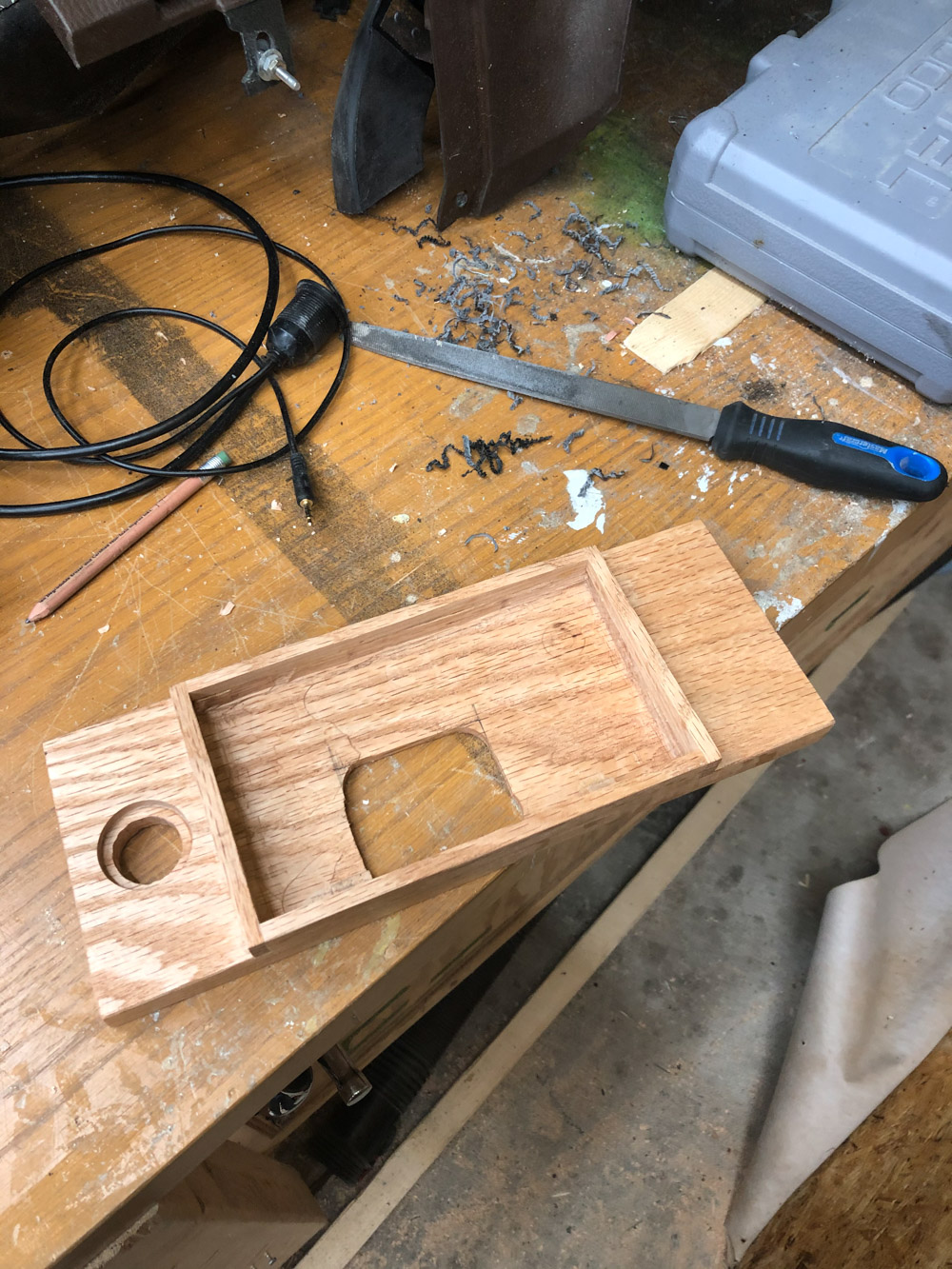
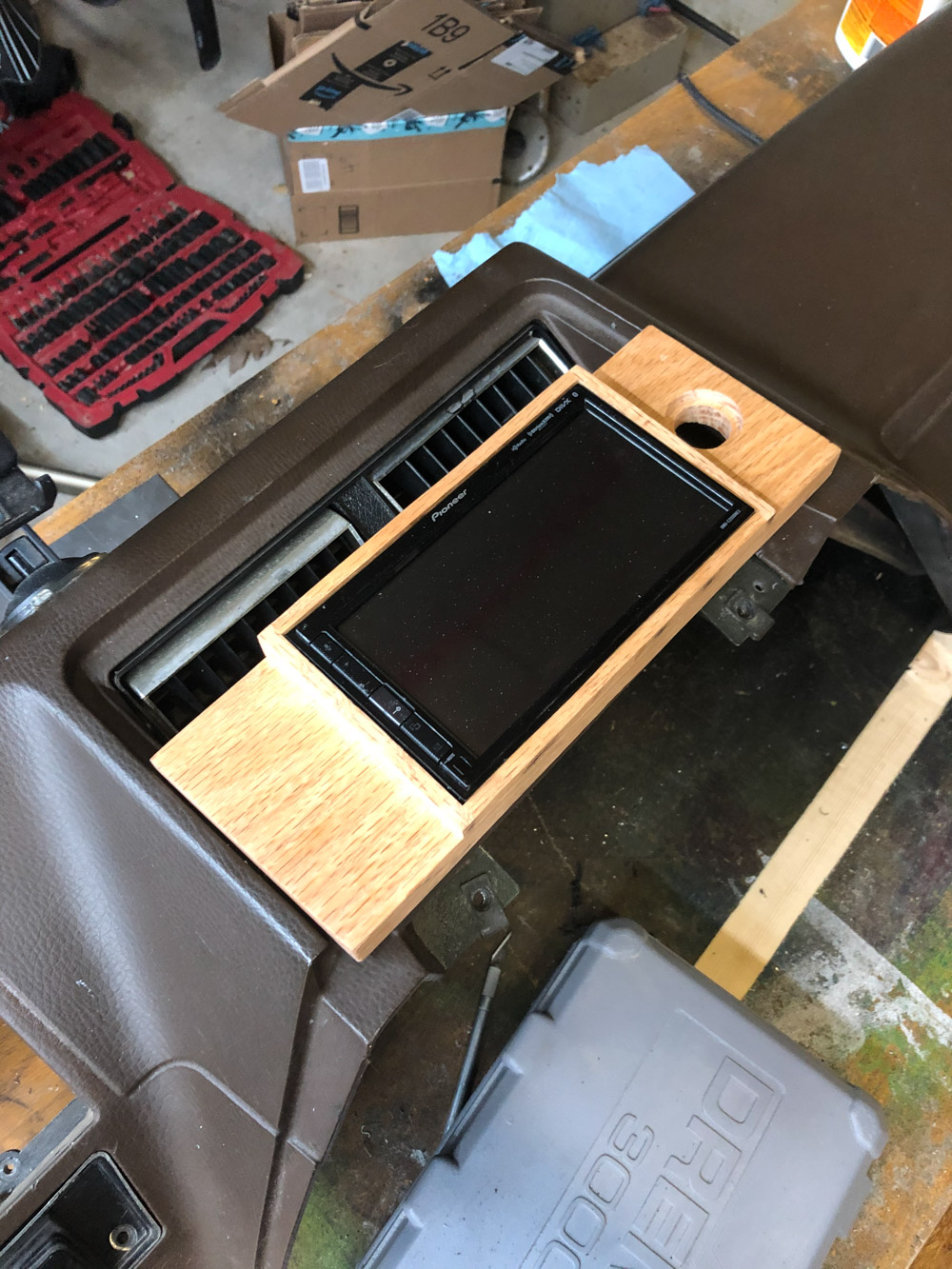
Getting the dash back in took most of an afternoon. Lots of screws to match to holes and vents to position perfectly so it could slide in.
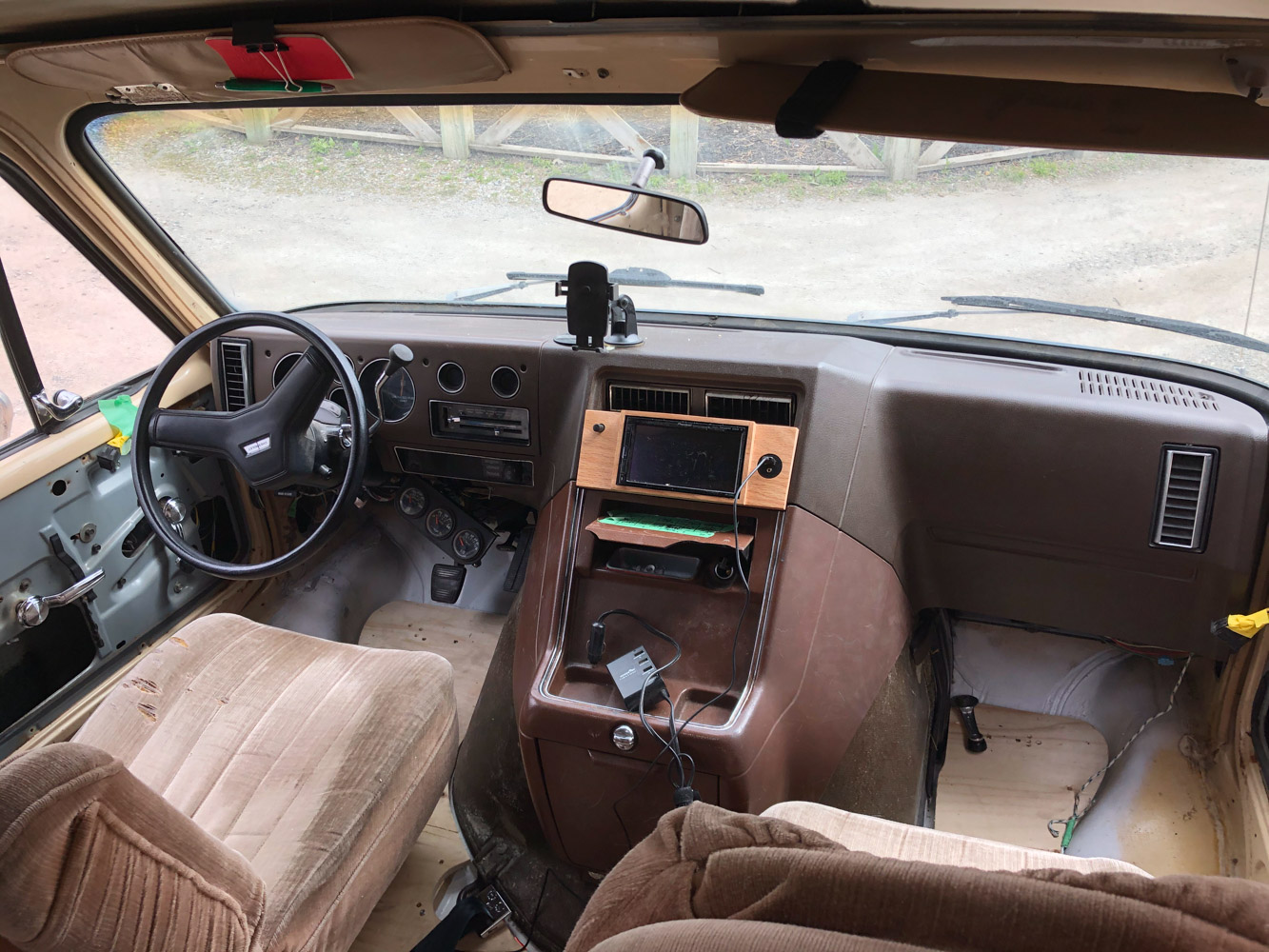
In the next post we’ll cover some body repair, painting and insulation.




